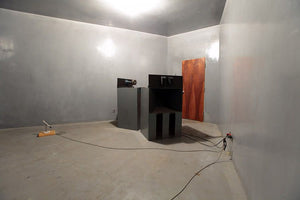The role of Reverb in Jazz Recording
Shaping Space: The role of Reverb in Jazz Recording, Then and Now
By Frans de Rond – Founder & Recording Engineer, Sound Liaison
Reverb is one of the most powerful tools in the recording engineer’s palette. In its best form, it doesn’t just add depth to a recording, it reveals it.
In jazz, a genre deeply rooted in space, dynamics and interplay, reverb plays a particularly subtle and essential role.
Throughout the history of jazz recording, the use of reverb has evolved dramatically, from the natural ambience of smoky clubs to digital algorithms that simulate concert halls with surgical precision. In my own work at Sound Liaison, I use reverb with a minimalist mindset: to enhance what is already there, not to fabricate something new. High-end tools like the TC Electronic System 6000 allow me to do just that, with transparency, depth and detail that honors the performance.
This blog is a brief journey through the history of reverb in jazz, and a reflection on how thoughtful reverb use, especially at the audiophile level, can bring a recording to life.
The Early Days: Natural Room Sound
In the 1930s and ‘40s, reverb wasn’t something engineers added.
It was simply part of the room. Jazz was recorded live, often with a single or few microphones, in venues like radio studios, theaters, or large rooms with good acoustics. Think of the early Blue Note or Columbia sessions, dry by modern standards, but rich with the character of the space.
These recordings captured real ambience: the slap of a snare bouncing off a wooden floor, the distant warmth of a piano in a reverberant room. Engineers used mic placement to shape the sound. There were no artificial means to “add” reverb, only to capture it or move away from it.
The Studio Era: Plates and Chambers
With the rise of dedicated studios in the 1950s and '60s, engineers began to seek more control. Enter plate reverbs and echo chambers.
Studios like Capitol in Los Angeles famously used echo chambers, actual rooms with speakers and mics to capture a reverb return.
EMT introduced the EMT 140 plate reverb in 1957, which became an industry standard. It used a suspended metal plate to create a smooth, dense reverb tail that worked beautifully on vocals and horns. On classic jazz recordings from this era, think Miles Davis’ Kind of Blue or Bill Evans’ Waltz for Debby, you can hear subtle plate reverb adding cohesion and space without overwhelming the performance. The reverb was used sparingly, often just to add air or to support a solo instrument stepping forward.
On classic jazz recordings from this era, think Miles Davis’ Kind of Blue or Bill Evans’ Waltz for Debby, you can hear subtle plate reverb adding cohesion and space without overwhelming the performance. The reverb was used sparingly, often just to add air or to support a solo instrument stepping forward.
The Digital Revolution: Precision and Control
The 1980s ushered in digital reverbs, and with them, a new level of precision. Units like the Lexicon 224, 480L and eventually the TC Electronic’s System 6000 gave engineers control over every aspect of the reverb: decay time, early reflections, diffusion, and more. Digital reverb could simulate not only plates and rooms, but cathedrals, concert halls or entirely artificial spaces. For jazz, this opened new possibilities, but also new risks. Overuse of reverb in the digital era often led to unnatural, washed-out recordings where the space overtook the substance.
Digital reverb could simulate not only plates and rooms, but cathedrals, concert halls or entirely artificial spaces. For jazz, this opened new possibilities, but also new risks. Overuse of reverb in the digital era often led to unnatural, washed-out recordings where the space overtook the substance.
Used with care, however, digital reverb became a tool not just for simulation but for sculpting. The best engineers used it to complement the natural sound, to create subtle emotional cues, or to gently support a soloist without detaching them from the ensemble.
Reverb in Modern Jazz Recording
Today, reverb is everywhere, and often invisible. In modern jazz, you’ll hear everything from ultra-dry, close-mic’d recordings to lush, atmospheric productions that blur the lines between jazz, classical and ambient.
At Sound Liaison, I walk a fine line. I capture my recordings using one-point microphone setups in real acoustic spaces, now often more in DSD256. This already gives me a rich and natural reverb from the room itself. But sometimes, a piece needs just a bit more.
That’s where the TC Electronic System 6000 comes in.
What Makes the TC6000 So Special?
The System 6000 is not just another reverb unit, it’s a mastering-grade, multi-algorithm environment designed for extreme fidelity. It’s used not only in music production but in film scoring, high-end mastering, and broadcast.
What sets it apart is the quality of the algorithms and the way they preserve the integrity of transients and space. In jazz, where you often have fast attacks (snares, plucked bass, breath in a saxophone) and subtle interplay, lesser reverbs can smear or dull the signal. The TC6000 does the opposite, it enhances space without damaging detail.
Its reverb engines allow for extremely natural, dense spaces that don’t call attention to themselves. You can simulate the reflection pattern of a jazz club, a studio live room, or a small concert hall, with full control over the geometry and diffusion characteristics.
What I appreciate most is that the reverb becomes part of the fabric of the music, not a layer sitting on top of it. Using Reverb Like a Jazz Musician
Using Reverb Like a Jazz Musician
To me, using reverb in jazz is like comping behind a soloist, it’s about support, timing and restraint. Too much, and you’re stepping on the solo. Too little, and the moment can feel naked.
Here’s how I typically use reverb on a one-mic jazz recording:
- Touch of Tail for Solos: When a trumpet or saxophone steps forward, I may ride in a touch of reverb to help it bloom and fall away naturally.
- Room Reinforcement: If the natural room sound feels too dry, I’ll add a very subtle early reflection pattern or a short plate-like tail.
-
Stereo Spread: Even though my recordings are inherently stereo, a gentle reverb can open up the side image and increase the sense of immersion.
It’s always about subtlety. The best reverb is the one you don’t notice until it’s gone.
What Should Audiophiles Listen For?
In an audiophile context, reverb is a revealing element. It tells you about:
- The acoustic space of the recording
- The resolution of the playback system
-
The coherence of the mix
When listening to jazz recordings with high-quality reverb pay attention to:
- How the reverb decays, does it sound natural or does it "flutter" or "ring"?
- Does it follow the dynamics of the playing, or feel disconnected?
- Can you hear the shape of the space? Good reverb allows you to sense height, width, and depth.
A great reverb setting should let you "see" the room with your ears.
Final Thoughts: Space as Emotion
Reverb is more than an effect, it's emotional architecture. In jazz, it frames the performance without trapping it. It allows the music to breathe.
In the best recordings, reverb is not noticed, but felt. It connects you to the room, the players, the moment.
That’s what I aim for in every recording. Whether it’s a whisper of natural room tone or a carefully placed digital tail from the TC6000, the goal is the same: to let the music speak and to let the space sing with it.

